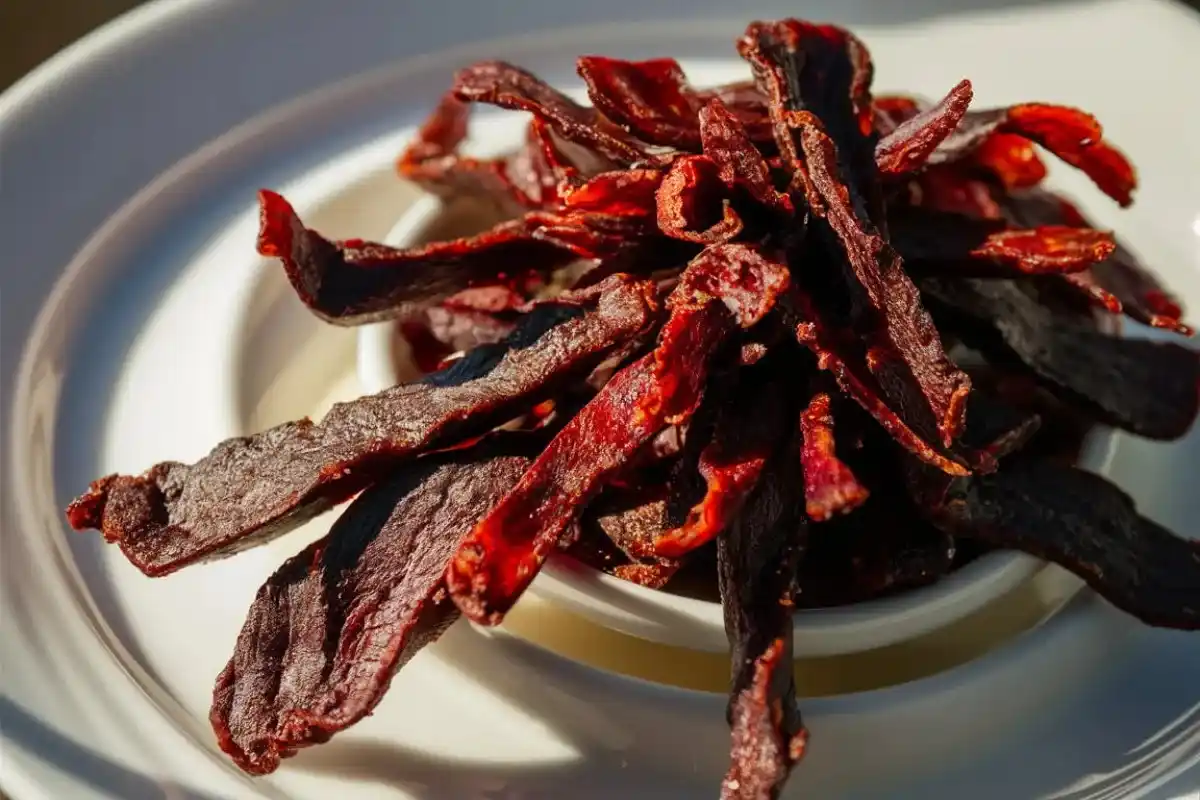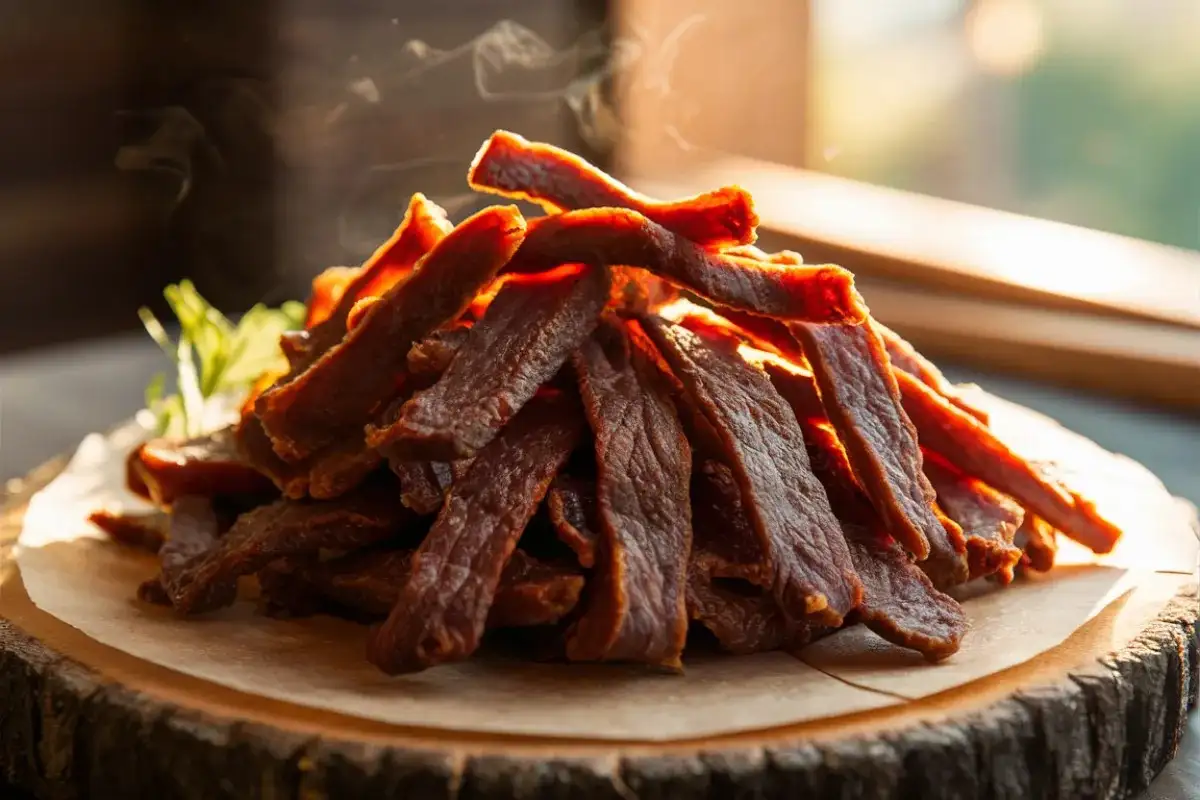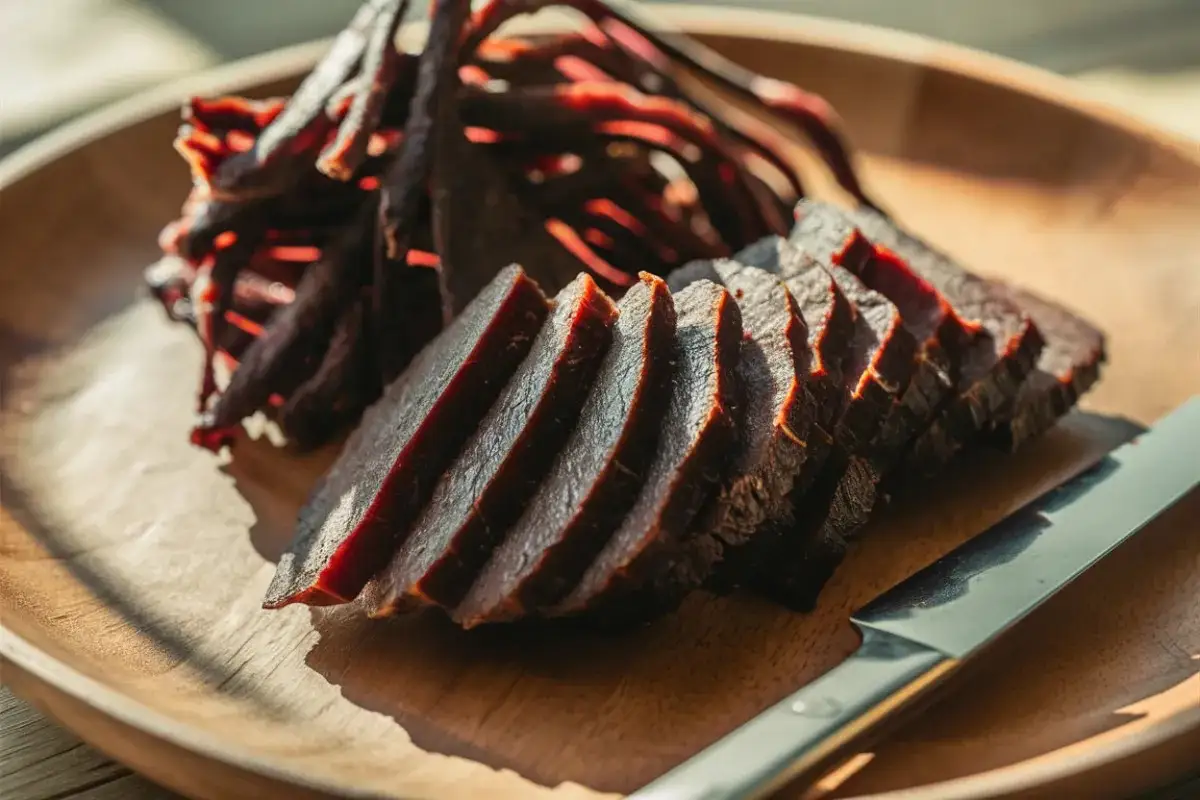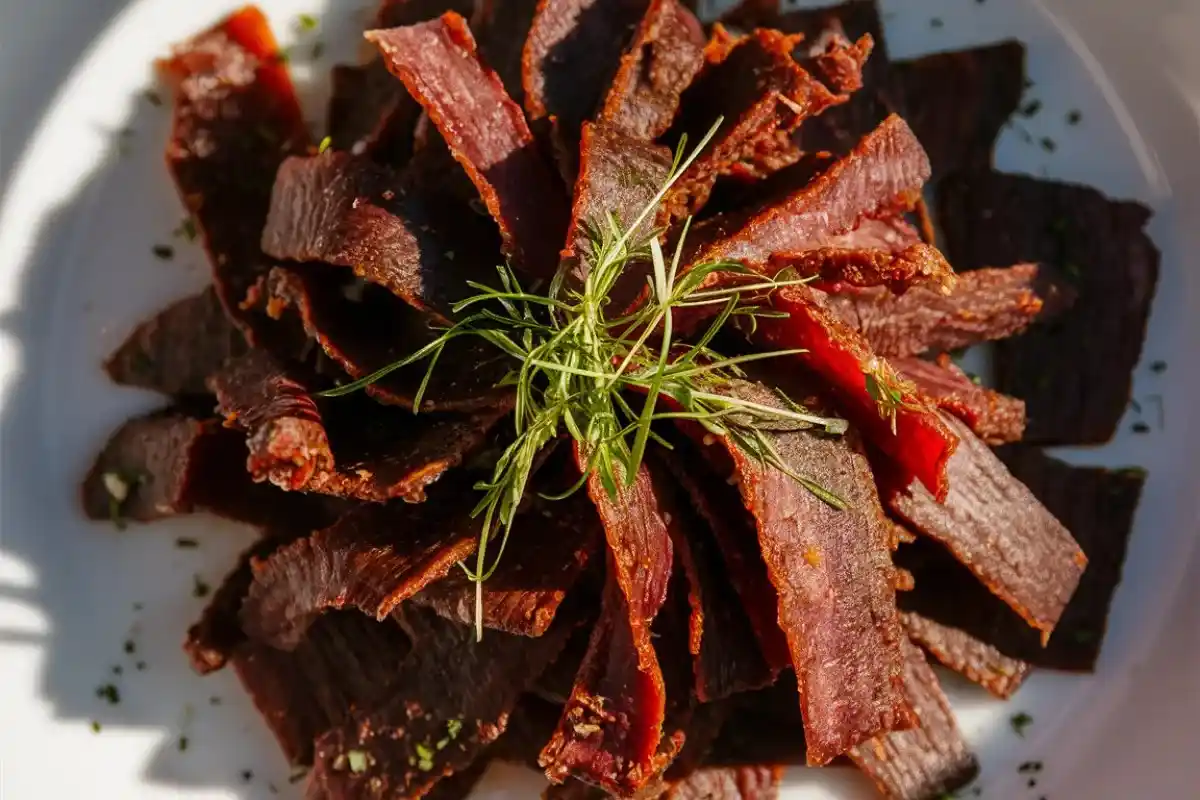Homemade jerky is a beloved snack for many due to its flavorful taste, satisfying chewiness, and convenience. However, one of the most common challenges faced by jerky enthusiasts is learning how to keep homemade jerky from molding. Unlike store-bought jerky, which often contains preservatives to extend its shelf life, homemade jerky is more vulnerable to spoilage. The good news is that there are effective strategies to prevent mold and keep your jerky fresh for longer periods.
This guide will dive deep into understanding how to keep homemade jerky from molding and provide a comprehensive range of techniques and tips to prevent this from happening. From selecting the right ingredients and proper preparation to advanced storage methods, you’ll learn everything you need to know to make long-lasting, mold-free homemade jerky.
Why Does Homemade Jerky Mold and How to Prevent It?

Before jumping into the steps for preventing mold, it is crucial to understand the root causes of mold growth on jerky. By grasping these factors, you can make informed choices throughout the jerky-making process to learn how to keep homemade jerky from molding effectively:
1. Moisture Content: The Main Reason Jerky Molds
The primary culprit behind mold growth on jerky is moisture. Mold thrives in environments where moisture is present, and if your jerky retains too much moisture after dehydration, it becomes an ideal breeding ground for mold spores. Understanding how to keep homemade jerky from molding involves managing the moisture content carefully.
- Inadequate Dehydration: The most common reason for mold on jerky is that it has not been dried sufficiently. When the meat is not fully dehydrated, moisture remains inside, promoting mold growth. Proper dehydration should remove most of the moisture from the meat, leaving it dry to the touch but still flexible.
- Thickness of Meat Slices: Thicker slices of meat take longer to dry, which increases the risk of moisture retention in the jerky. It’s essential to slice the meat thinly and evenly to ensure it dries thoroughly.
- Ambient Humidity Levels: The environment where you dehydrate your jerky can impact its final moisture content. High humidity slows the drying process and can cause the jerky to retain moisture. Using a dehydrator with a temperature control function or drying in a low-humidity area can help.
2. How Improper Storage Conditions Lead to Mold on Jerky
Once the jerky is dehydrated, knowing how to keep homemade jerky from molding depends significantly on the storage conditions. Factors such as air exposure, temperature, and humidity levels can all contribute to mold development:
- Exposure to Air: Air exposure introduces mold spores and other contaminants to the jerky. To minimize this risk, it is crucial to use airtight containers or vacuum-sealed bags that limit air contact.
- Temperature and Humidity: Storing jerky in warm or humid environments can cause mold to develop rapidly. Mold grows best in conditions where temperatures are above room temperature, and there is high humidity.
- Storage Containers: The type of container you use is critical. Containers that are not airtight or that allow moisture to seep in can contribute to mold formation. Glass jars with tight lids, vacuum-sealed bags, or food-grade plastic containers with airtight seals are ideal for storing jerky.
3. Preventing Mold by Avoiding Contamination During Jerky Preparation
Contamination during the preparation process is another common cause of mold on jerky. To effectively learn how to keep homemade jerky from molding, it’s important to maintain cleanliness and avoid cross-contamination during preparation:
- Maintain Cleanliness: Ensure all utensils, cutting boards, and surfaces are sanitized before use. Regularly wash your hands or wear gloves when handling the meat to reduce the risk of contamination.
- Avoid Cross-Contamination: Do not use the same utensils or cutting boards for different types of food without properly cleaning them. Raw meat, in particular, can introduce bacteria and mold spores that can affect your jerky.
By understanding these causes, you can take proactive measures to prevent mold and extend the shelf life of your homemade jerky.
Step-by-Step Tips on How to Keep Homemade Jerky from Molding

To effectively understand how to keep homemade jerky from molding, follow these detailed steps that cover proper dehydration, safe storage, and the use of preservatives:
Step 1: Proper Dehydration Techniques to Prevent Mold
Dehydration is the most critical step when learning how to keep homemade jerky from molding. It directly impacts the moisture content of the final product, which is the main factor in mold prevention. Choose the best cuts of meat for jerky to ensure optimal dehydration results.
Choosing the Right Cut of Meat
Select a lean cut of meat, such as top round, flank steak, or sirloin. Lean cuts are preferable because they contain less fat. Fat does not dehydrate well and can become rancid over time, increasing the risk of spoilage. The leaner the meat, the easier it will be to dehydrate properly:
Preparing the Meat
- Trim the Fat: Remove as much visible fat from the meat as possible. Fat can cause the jerky to spoil faster, even if it is stored correctly.
- Slice the Meat Evenly and Thinly: For consistent drying, slice the meat against the grain into thin strips, ideally about 1/8 to 1/4 inch thick. Thinner slices will dry faster and more evenly, reducing the risk of moisture pockets that could lead to mold growth.
- Marinate the Meat: Marinating the meat serves several purposes. It adds flavor, helps tenderize the meat, and can assist in drawing out moisture. Use a marinade with high salt content, vinegar, or curing salt to help reduce moisture levels. Salt and vinegar act as natural preservatives, while curing salts can further extend the jerky’s shelf life.
Dehydration Methods
- Using a Dehydrator: A food dehydrator is the best tool for making jerky because it provides consistent heat and airflow. Set the dehydrator temperature to at least 160°F (71°C) and allow the meat to dry for 4-8 hours, depending on the thickness of the slices and the ambient humidity. Rotate trays periodically to ensure even drying.
- Using an Oven: If you don’t have a dehydrator, an oven can be used to dry jerky. Set the oven temperature to its lowest setting (usually around 160-170°F or 71-77°C) and keep the door slightly ajar to allow moisture to escape. Place the meat strips on a wire rack over a baking sheet and dry for several hours, checking periodically for doneness.
- Using a Smoker: Smoking is another option for drying jerky, adding a unique flavor. Use a smoker at a low temperature (around 160°F or 71°C) and smoke for 4-6 hours, depending on the thickness of the meat. Make sure to use a hardwood like hickory, applewood, or mesquite to complement the flavor of the jerky.
Checking for Proper Dehydration
To ensure that your jerky is sufficiently dehydrated:
- Texture Test: Properly dehydrated jerky should be dry to the touch but still pliable. Bend a piece of jerky; it should crack slightly but not break. If it feels sticky or moist, it needs more drying time.
- Color and Appearance: The jerky should be uniform in color, with no visible moisture or oily patches.
- Weight Test: If you have a kitchen scale, weigh the meat before and after dehydration. The jerky should lose about 60-70% of its weight due to moisture loss.
Step 2: Safe Storage Practices for Mold-Free Jerky
Once the jerky is properly dehydrated, the next step in mastering how to keep homemade jerky from molding is ensuring it is stored correctly. Choosing airtight containers, vacuum-sealing, and storing in a cool, dark place are key practices:
Choosing the Right Storage Containers
- Airtight Containers: Store jerky in airtight containers, such as vacuum-sealed bags, glass jars with tight-fitting lids, or food-grade plastic containers. Airtight containers prevent air exposure, which can introduce mold spores and moisture.
- Vacuum-Sealing: Vacuum-sealing is one of the best methods for storing jerky. By removing all the air from the storage bag, you minimize the risk of mold growth. Vacuum-sealed bags are ideal for long-term storage and can keep jerky fresh for several months or even longer if stored properly.
- Using Moisture Absorbers: Adding moisture absorbers, such as silica gel packs or dry white rice, to the container can help reduce humidity levels and keep the jerky dry. These absorbers are especially useful in humid climates or if you plan to store the jerky for an extended period.
Ideal Storage Locations
- Cool, Dark Places: Store jerky in a cool, dark pantry or cupboard away from direct sunlight, which can cause heat buildup and spoilage. Avoid storing jerky near heat sources, such as ovens or stoves.
- Refrigeration or Freezing: For longer shelf life, consider storing jerky in the refrigerator or freezer. Refrigeration can extend the shelf life of jerky by several months, while freezing can keep it fresh for a year or more. If you choose to freeze your jerky, ensure it is stored in airtight, freezer-safe bags or containers.
Using Oxygen Absorbers
Oxygen absorbers are small packets containing iron powder that help remove oxygen from the storage environment. These are particularly effective when storing jerky in vacuum-sealed bags. By removing oxygen, you create an environment that is inhospitable to mold and bacteria, extending the shelf life of your jerky.
Step 3: Using Preservatives to Stop Mold Growth on Jerky
Using preservatives is another effective technique in the process of understanding how to keep homemade jerky from molding. Both natural and chemical preservatives can help extend the shelf life of your jerky:
Natural Preservatives
- Salt: Salt is a natural preservative that has been used for centuries to preserve meat. Salt works by drawing out moisture, which inhibits the growth of mold and bacteria. When making jerky, consider using a salt-based marinade or cure to help extend its shelf life.
- Vinegar: Vinegar is another natural preservative that helps lower the pH of the meat, making it more difficult for mold and bacteria to thrive. Adding vinegar to your marinade can help increase the longevity of your jerky.
- Herbs and Spices: Some herbs and spices, such as garlic, oregano, thyme, and rosemary, have natural antimicrobial properties. Incorporating these into your marinade or seasoning blend can help reduce the risk of mold growth.
Chemical Preservatives
- Curing Salts: Curing salts, like Morton’s Tender Quick, contain nitrates and nitrites that inhibit mold growth by reducing water activity in the meat. Curing salts should be used according to the manufacturer’s instructions to ensure safety and effectiveness.
Using a combination of natural and chemical preservatives can help extend the shelf life of your jerky without compromising its taste or texture.
Step 4: Advanced Techniques to Extend Jerky Shelf Life
For those looking to maximize the shelf life of their jerky, several advanced techniques will aid you in learning how to keep homemade jerky from molding effectively:
Vacuum Sealing with Oxygen Absorbers
Vacuum sealing is one of the most effective ways to store jerky, as it removes air, which is necessary for mold growth. Adding oxygen absorbers to vacuum-sealed bags can further enhance preservation by eliminating any remaining oxygen inside the bag. This method is ideal for long-term storage and can keep jerky fresh for months or even years.
Using Commercial Drying Agents
Commercial food-grade desiccants, like silica gel, are highly effective at absorbing excess moisture within storage containers. These agents are particularly useful if you live in a humid climate or plan to store your jerky for extended periods. Place a small desiccant packet inside the storage container to keep the jerky dry.
Employing Higher Salt Concentrations
Increasing the salt concentration in the marinade or cure can help reduce moisture levels and inhibit the growth of mold. Salt acts as a natural preservative by drawing moisture out of the meat and creating an environment that is inhospitable to mold. If you prefer a saltier flavor, consider using a dry rub with a higher salt content to further extend the shelf life of your jerky.
Infusing Antimicrobial Herbs and Spices
Certain herbs and spices, such as garlic, oregano, thyme, and rosemary, have natural antimicrobial properties. Incorporating these into your marinade or rub can help reduce the risk of mold growth. Experiment with different combinations of herbs and spices to find a flavor profile that you enjoy while benefiting from their preservative qualities.
Troubleshooting Guide for Mold Prevention

If you still encounter mold issues, here are some troubleshooting tips:
- Ensure Complete Dehydration: Recheck your dehydration process. Consider extending the drying time or adjusting the temperature settings to ensure all moisture is removed from the meat.
- Review Storage Practices: Double-check that your storage containers are airtight and that they are stored in a cool, dark place. Use additional moisture absorbers if needed.
- Inspect for Contamination: Ensure all surfaces, utensils, and containers are sanitized before use. Consider using gloves during the preparation process to minimize contamination risk.
- Use More Preservatives: If mold continues to be an issue, consider increasing the amount of salt or vinegar in your marinade, or use curing salts to extend the shelf life.
Frequently Asked Questions About Addressing Common Queries
Here are some frequently asked questions about preventing mold on homemade jerky:
1. Why does homemade jerky mold faster than store-bought jerky?
Store-bought jerky often contains chemical preservatives and is packaged in a controlled environment, reducing the chance of mold. Homemade jerky lacks these controls and thus has a shorter shelf life.
2. How do I know if my jerky is fully dehydrated?
Fully dehydrated jerky should be dry, firm, and slightly pliable. It should not feel sticky or moist. A properly dehydrated piece will crack slightly when bent but not break.
3. Can I use my home oven for making jerky?
Yes, you can use a home oven to make jerky. Set the temperature to a minimum of 160°F (71°C) and keep the oven door slightly open to allow moisture to escape.
4. How long can I store homemade jerky without refrigeration?
If properly dehydrated and stored in an airtight container, homemade jerky can last up to 1-2 months at room temperature. Refrigeration or freezing can extend its shelf life to several months or even a year.
5. What are the signs of mold growth on jerky?
Look for white, green, or black fuzzy spots. A musty smell is also a strong indicator of mold.
Conclusion:
By following these detailed steps and utilizing the right storage techniques, you can keep your homemade jerky fresh and mold-free for an extended period. Focus on achieving proper dehydration, utilizing safe storage methods, and considering the use of preservatives to enjoy your jerky without concern.
For more information on how to keep your jerky safe for longer, explore how long does beef jerky last. Implement these guidelines, and you’ll be able to enjoy your homemade jerky without the frustration of dealing with mold. Happy jerky-making!

